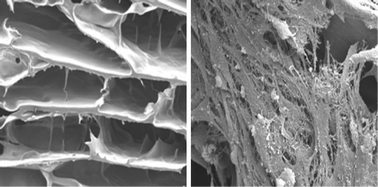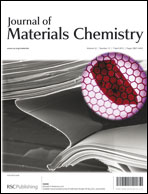High-strength pristine porous chitosan scaffolds for tissue engineering
Abstract
Chitosan, a biodegradable naturally occurring polymer, has drawn considerable attention in recent years as a scaffolding material in tissue engineering and regenerative medicine. Despite its favorable biological properties, the weak mechanical strength of scaffolds produced from chitosan has limited the scope of their application. Here we fabricated 3D pristine porous chitosan scaffolds with unprecedented mechanical strength and investigated the regulatory role of chitosan and acidic concentrations on the crystallinity and thus on the mechanical and biological properties of produced scaffolds. Chitosan scaffolds of varying mechanical properties were prepared from solutions with chitosan concentrations of 4–12 wt%. The produced scaffolds showed no apparent shape change after immersion in Dulbecco's Modified Eagle Medium (DMEM), phosphate buffered saline, and simulated body fluid for two weeks. We showed that the crystallinity of the scaffold increased with increasing chitosan concentration or decreasing solution acidity, and the maximum compressive mechanical strength and modulus of 1.74 ± 0.01 MPa and 17.99 ± 0.11 MPa, respectively, were achieved at a chitosan concentration of 12 wt%. MG-63 osteoblast cells demonstrated improved adhesion, proliferation and osteogenic activity on chitosan scaffolds of increased chitosan concentration or mechanical strength. The ability to produce high-strength chitosan scaffolds and engineer their mechanical properties can substantially expand the applicability of chitosan in tissue engineering as well as other engineering applications.


 Please wait while we load your content...
Please wait while we load your content...